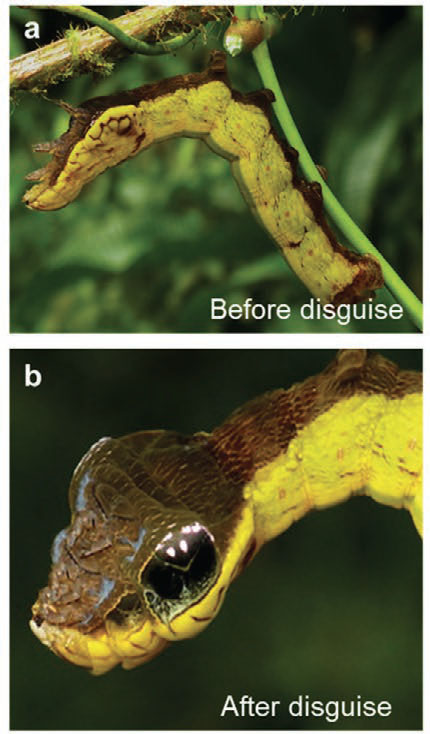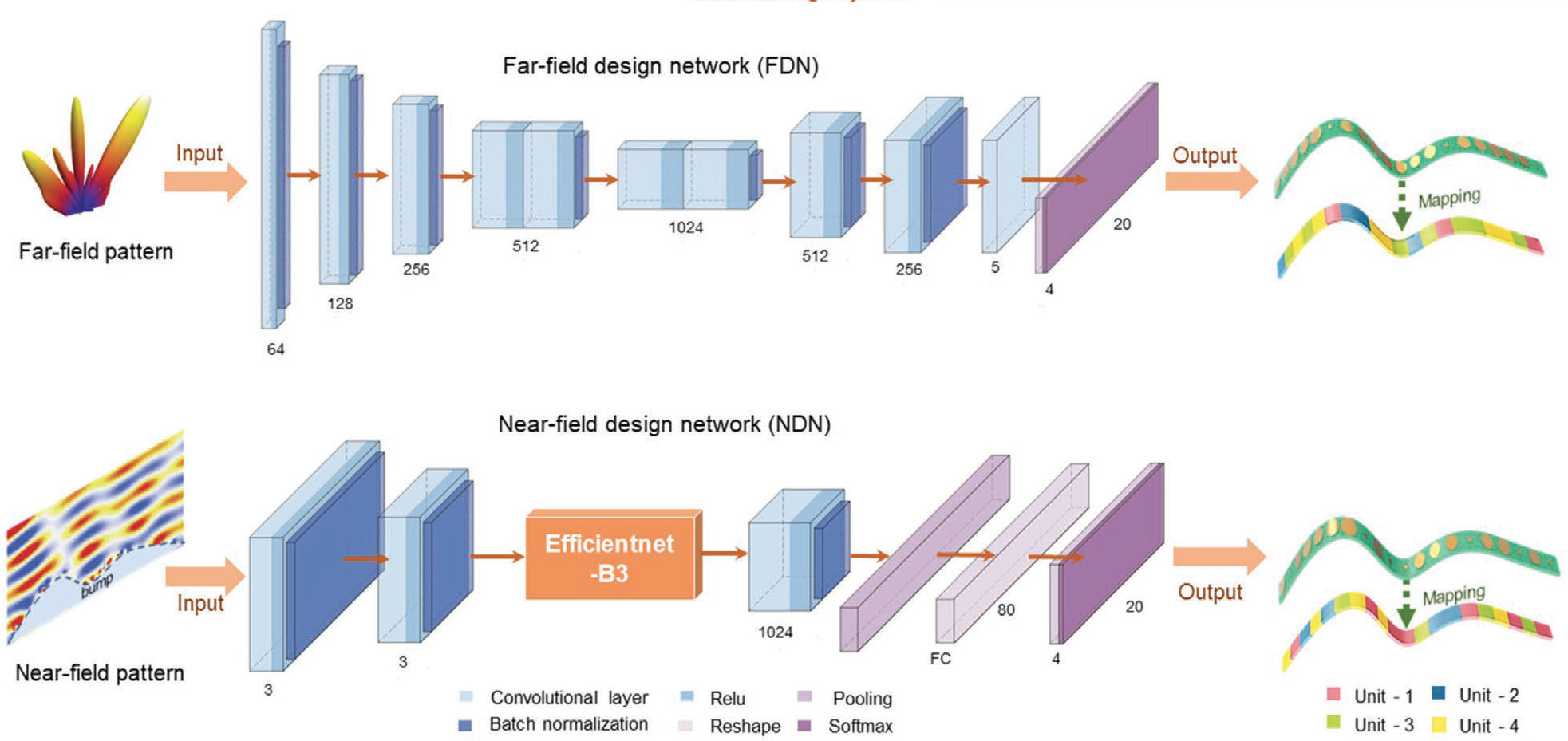| Mar 04, 2022 |
Form-free metasurfaces enable novel and intelligent optical illusion
(Nanowerk News) The scientific community has always been enthralled in the creation of an illusion – the optical transformation of an object into another object. So far, scientists experimenting with metamaterials in 'ghosting' have not had much success in changing the perception of the real object.
|
|
Mainstream transformation-optics-based optical illusions are inherently hindered by the extreme requirements of metamaterial compositions in practice and unfavorably limited by the very large computational cost caused by their bulky state.
|
|
Optical illusion refers to an umbrella technique that can visually transform one object into another object, ultimately leading to camouflage for either active attack or passive defense. In nature, the optical illusion is particularly ubiquitous as a superior survival ability arising through natural evolution.
|
 |
| Camouflage in nature. The caterpillar can either disguise itself as leaves, branches, and feces to blend into the surrounding environment to protect itself or even transform itself into a poisonous snake to scare away predators. (Reprinted with permission by Wiley-VCH Verlag)
|
|
Advancing the field, researchers have proposed an intelligent optical illusion enabled by a single layer of form-free metasurfaces instead of a conventional bulky metamaterial slab.
|
|
They report their findings in Advanced Functional Materials ("In Situ Customized Illusion Enabled by Global Metasurface Reconstruction").
|
|
This work demonstrates an intelligent optical illusion enabled by global metasurface reconstruction that can realize arbitrary user-defined illusion.
|
|
At the physical level, unlike conventional transformation-optics-based illusions that utilize bulky metamaterials, this proposed metasurface-enabled illusion eliminates the considerable requirements of metamaterials and defines a new illusion paradigm.
|
|
At the engineering level, deep learning algorithms assist in explaining/designing the intricate light-metasurface interaction (e.g., the element-element coupling and the phase deviation for curve metasurface), creating a connection between the physical structure and its optical illusion.
|
|
The form-free metasurfaces are globally controlled via a deep learning paradigm, which consists of two specific convolutional neural networks (CNNs), aiming to solve two exemplary optical tasks, i.e., far-field and near-field.
|
 |
| A deep learning system works for global macro-metasurface design based on a given far- or near-field pattern. Correspondingly, two networks are set up, termed the far-field design network (FDN, upper) and near-field design network (NDN, lower). The output metasurfaces are denoted by four labels (0, 1, 2, 3) in the form of one-hot codes. (Reprinted with permission by Wiley-VCH Verlag)
|
|
The authors note that, compared with a traditional transformation optics-based illusion using bulky metamaterials (equivalent medium theory), their work enables a metasurface-enabled illusion by imparting a discontinuous phase shift at the interface and gives rise to intellectualization and practicality.
|
|
More crucially, they conclude, this work paves the way for the next generation of intelligent metadevices that can self-adapt to dynamic surroundings and for in situ customized demand.
|


 By
Michael
Berger
– Michael is author of three books by the Royal Society of Chemistry:
Nano-Society: Pushing the Boundaries of Technology,
Nanotechnology: The Future is Tiny, and
Nanoengineering: The Skills and Tools Making Technology Invisible
Copyright ©
Nanowerk LLC
By
Michael
Berger
– Michael is author of three books by the Royal Society of Chemistry:
Nano-Society: Pushing the Boundaries of Technology,
Nanotechnology: The Future is Tiny, and
Nanoengineering: The Skills and Tools Making Technology Invisible
Copyright ©
Nanowerk LLC
